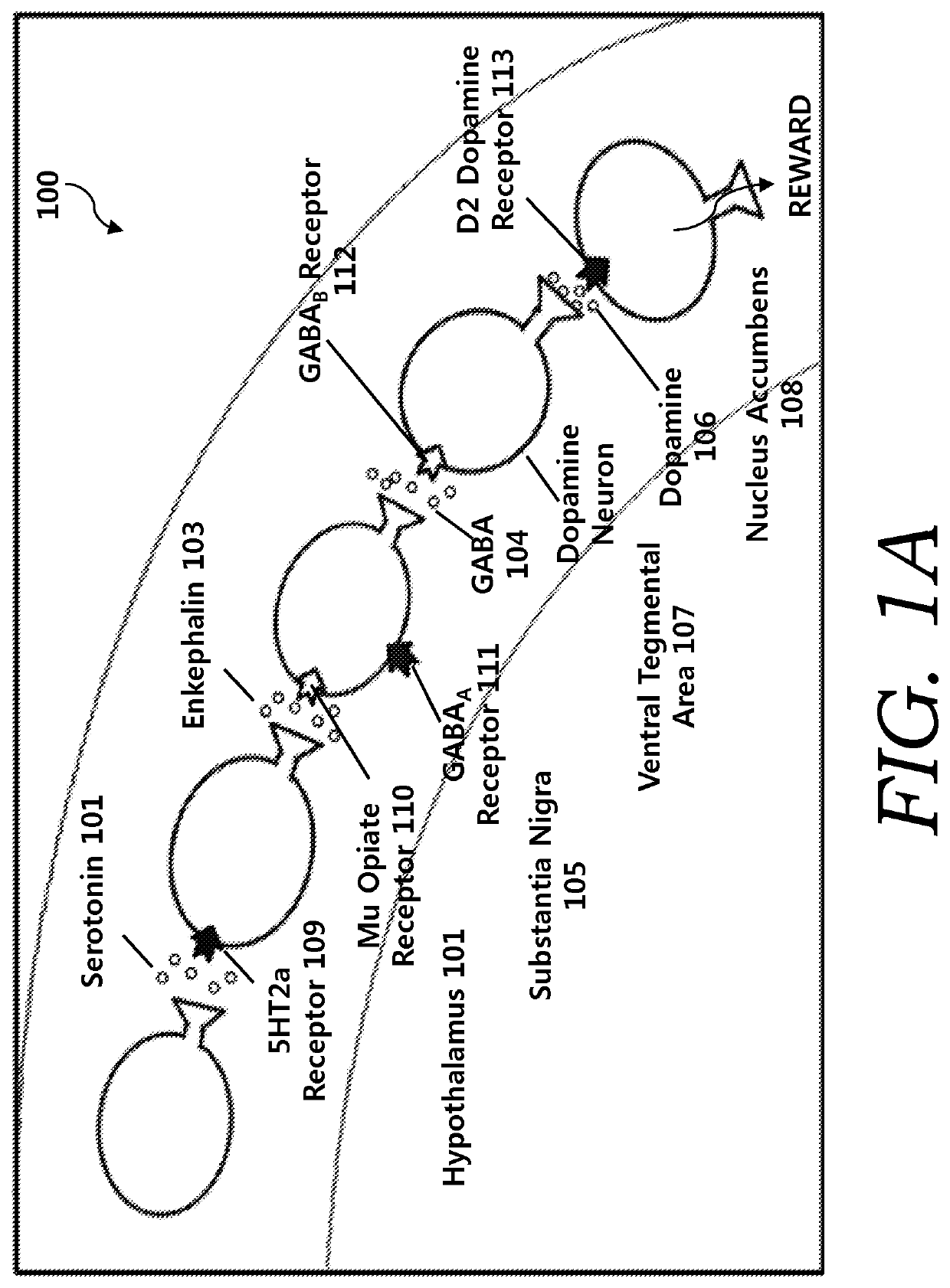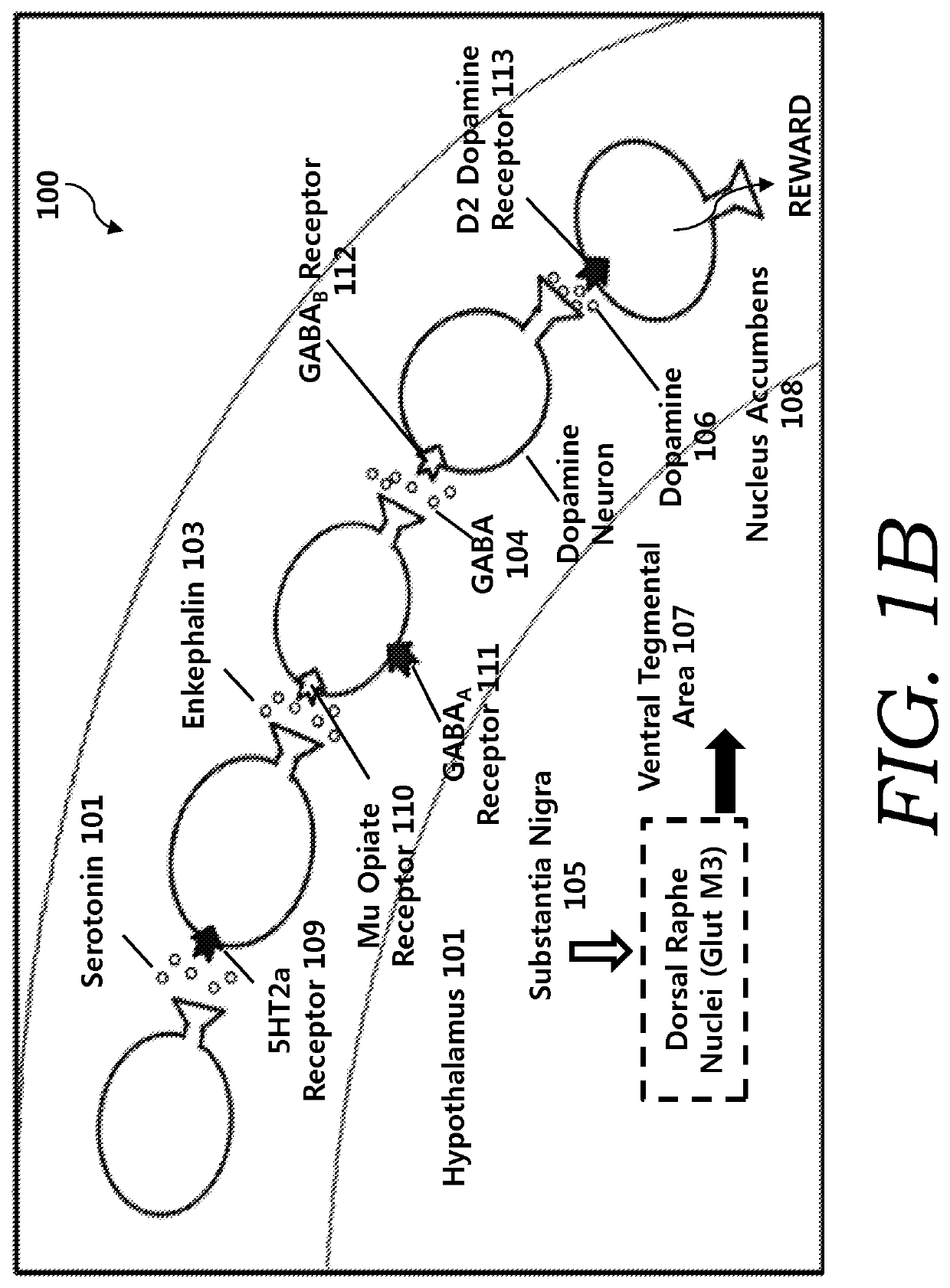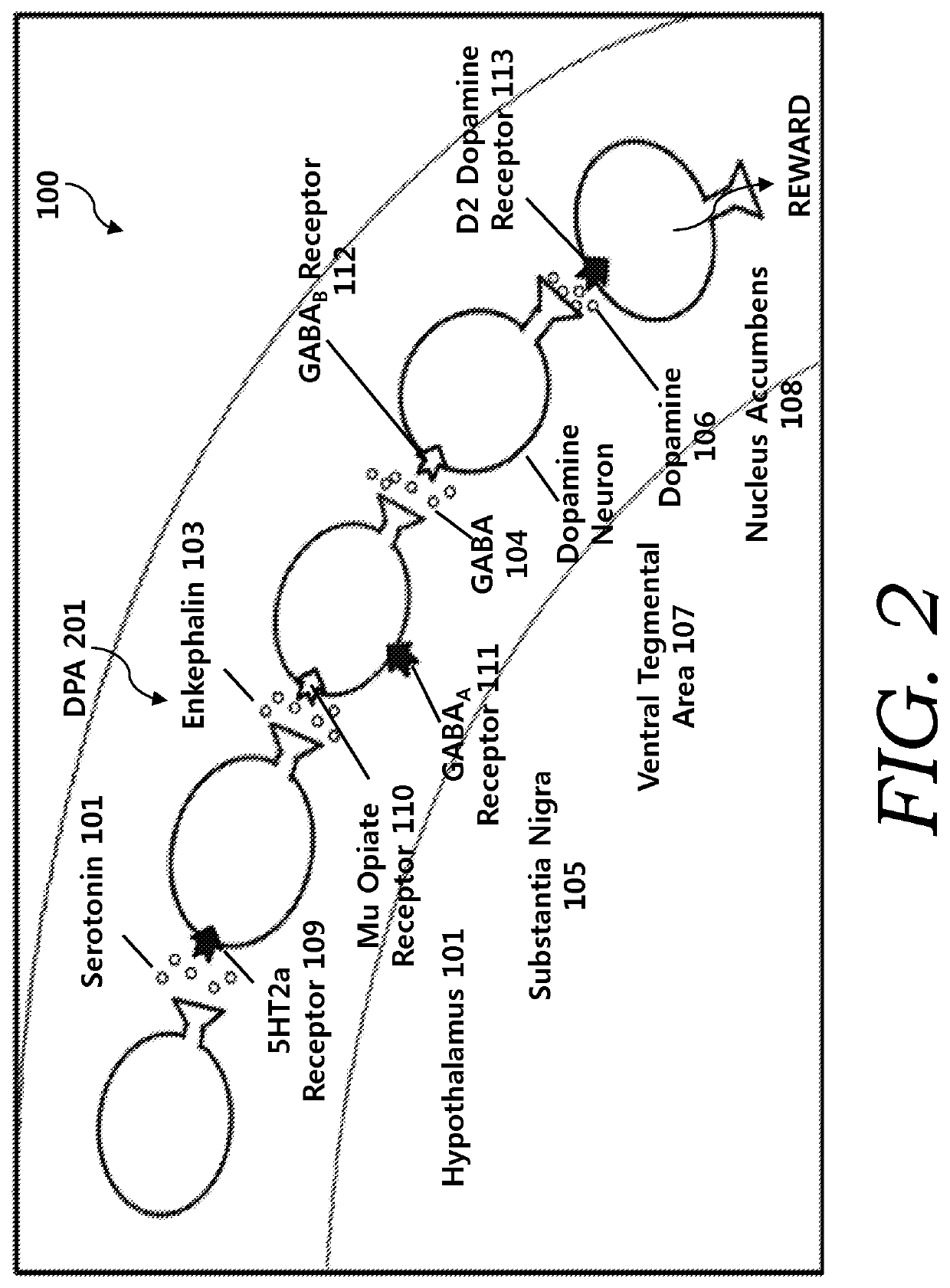Anti-RDS compounds and method of manufacture and administration thereof to induce dopamine homeostatis
a technology of anti-rds and anti-drn, which is applied in the direction of pharmaceutical delivery mechanism, emulsion delivery, organic active ingredients, etc., can solve the problems of reducing dopaminergic activity, affecting individuals to a high risk of multiple addictive, impulsive, compulsive behaviors, etc., to increase the release of enkepahlins, induce dopamine homeosta
- Summary
- Abstract
- Description
- Claims
- Application Information
AI Technical Summary
Benefits of technology
Problems solved by technology
Method used
Image
Examples
examples
[0093]Compositions
[0094]The following TABLE 2 reflects different compositions made to form a 30 dose supply of 50 mg doses for embodiments of the present invention for mixtures of AquaPower liquid, with two or more of (a) DLPA, (b) NAC, and (c) D-kyotorphin (or L-arginine and L-tyrosine).
[0095]
TABLE 2AquaPowerL-arginineL-tyrosineliq (ml)DLPA (g)NAC (g)D-Kyo (g)(g)(g)900307215——9003072———900—7215——90030—15——9003072157.54.59003072—7.54.590072157.54.590030—157.54.5
[0096]The following TABLE 3 reflects different compositions made to form 30 pills for embodiments of the present invention for mixtures of D-kyotorphin (or L-arginine and L-tyrosine) with one or both of (a) DLPA and (b) NAC. These are tablets of nanoparticles.
[0097]
TABLE 3L-arginineL-tyrosineWeight perDLPA (g)NAC (g)D-Kyo (g)(g)(g)pill (g)307215——3.9—7215——2.930—15——1.53072—7.54.53.830——7.54.51.4—72—7.54.52.8
[0098]Optionally, the following additional nutrients can be added to the compositions: pyridoxal-5-phosphate (the activ...
PUM
| Property | Measurement | Unit |
|---|---|---|
| sizes | aaaaa | aaaaa |
| particle size | aaaaa | aaaaa |
| particle size | aaaaa | aaaaa |
Abstract
Description
Claims
Application Information
 Login to View More
Login to View More - R&D
- Intellectual Property
- Life Sciences
- Materials
- Tech Scout
- Unparalleled Data Quality
- Higher Quality Content
- 60% Fewer Hallucinations
Browse by: Latest US Patents, China's latest patents, Technical Efficacy Thesaurus, Application Domain, Technology Topic, Popular Technical Reports.
© 2025 PatSnap. All rights reserved.Legal|Privacy policy|Modern Slavery Act Transparency Statement|Sitemap|About US| Contact US: help@patsnap.com



